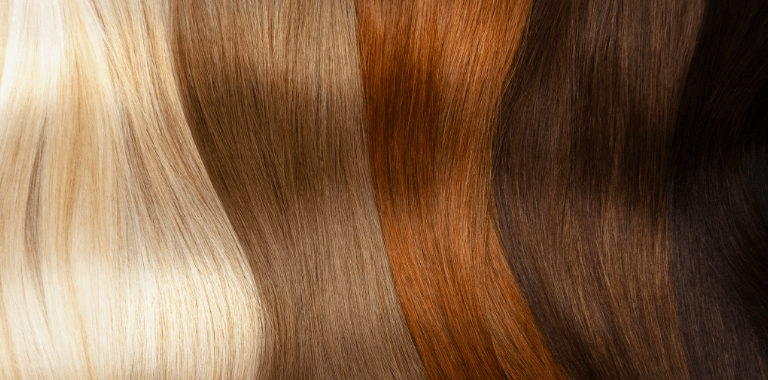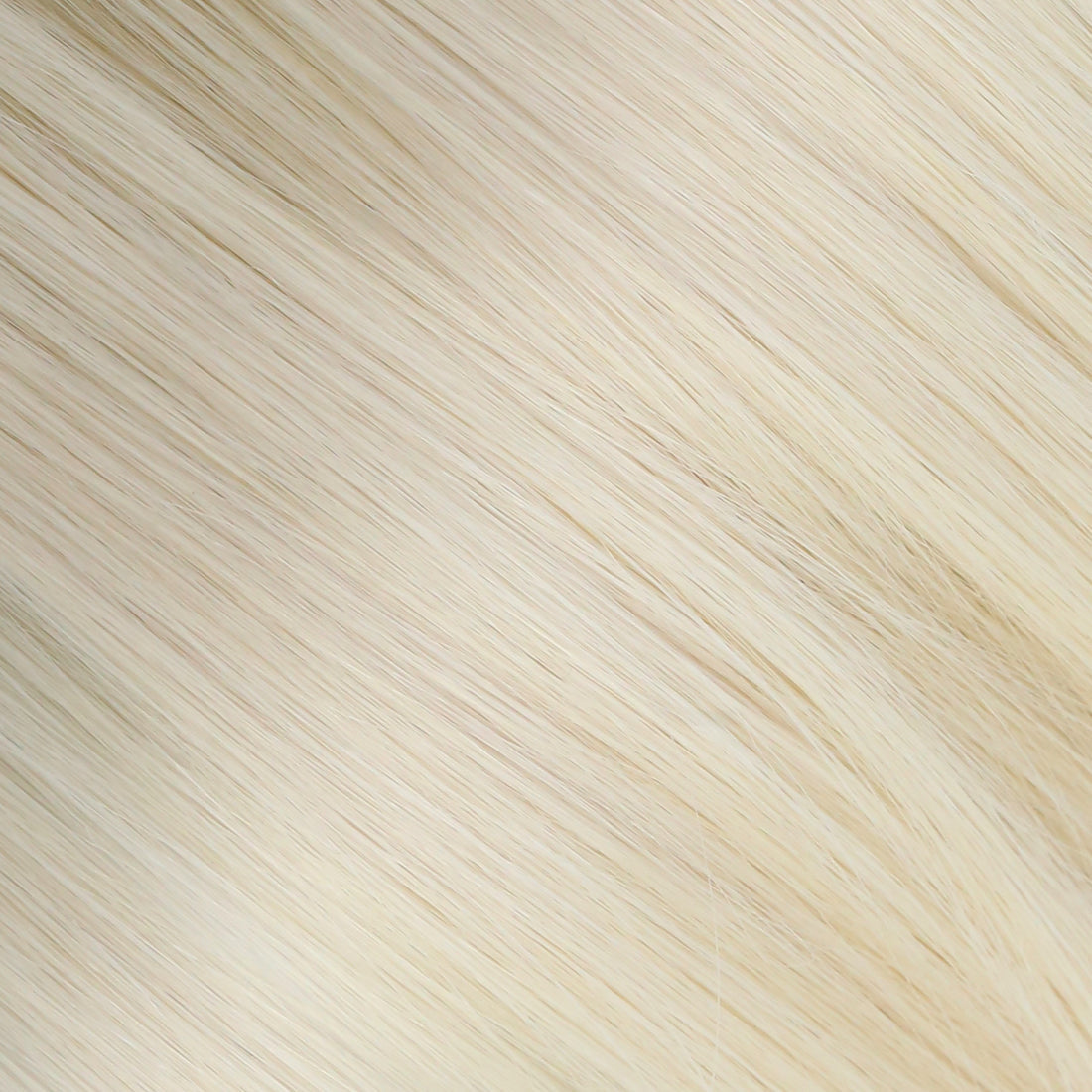Hair breakage on top of head can be more than just a bad hair day; it's a distress signal from your scalp and strands. But fear not! You're about to embark on a journey that will turn the tide in your favor, transforming brittle, weak hair into the flowing, strong locks you deserve. From understanding the "whys" behind breakage to implementing "wow" solutions, we've got your back (and your scalp)!

Understanding hair breakage on top of head
Hair breakage is a common issue many face, characterized by strands snapping off mid-shaft, leading to split ends and shorter lengths. Unlike hair fall, where strands shed from the scalp, breakage indicates damage along the hair's length. Knowing the difference helps target the right treatment.
Hair Breakage
- Breakage occurs along the length of the hair shaft.
- Often characterized by short, uneven strands or split ends.
- Typically caused by external factors such as heat styling, chemical treatments, or mechanical damage.
- Hair breakage may be more noticeable during combing or styling.
Hair Fall
- Hair loss occurs at the roots, leading to visible thinning or bald patches.
- Shed hairs have a white bulb at the root.
- Hair fall can be caused by various factors, including genetics, hormonal changes, medical conditions, or stress.
- Increased hair fall may result in excessive shedding during washing or brushing.
What causes hair breakage?
Hair breakage, particularly on the crown, can result from various factors. It's akin to investigating a mystery within your hair care regimen: scrutinizing clues to uncover the culprit. Let's dissect the typical suspects:
- Harsh Styling Practices: Too much heat styling, tight hairstyles, and rough towel-drying can traumatize your tresses.
- Chemical Treatments: Regular dye jobs, relaxers, or perms might offer you the look you love but at the cost of your hair's integrity.
- Environmental Factors: Sun exposure, humidity, and pollution? They're not just talking points for weather forecasts but real hair health hazards.
- Nutritional Deficiencies: Just like the rest of your body, your hair craves certain nutrients to thrive. Lack of these can lead to breakage city.
The impact of hair breakage on overall hair health and appearance
Hair breakage can significantly affect the condition and appearance of your hair. Here's how it impacts your locks:
- Reduced Length and Volume: Hair breakage leads to the loss of hair length and volume, making the hair appear thinner and less dense.
- Dull and Frizzy Appearance: Broken strands often have rough, frayed ends that contribute to a dull and frizzy appearance.
- Difficulty Styling: Hair breakage can make it challenging to achieve desired hairstyles, as the hair lacks strength and elasticity.
- Risk of Further Damage: Continual hair breakage weakens the hair shaft, making it more susceptible to additional breakage and damage.
- Impact on Self-Esteem: The appearance of damaged and brittle hair can negatively affect self-confidence and overall well-being.
Understanding these impacts can help you take appropriate steps to address and prevent hair breakage, maintaining healthier and more vibrant locks.

How to prevent hair breakage ontop of head
Before delving into details, take a moment to visualize your hair as a fortress. Just as a castle needs sturdy walls and defenses to withstand attacks, your hair also needs a protective strategy against the numerous challenges it encounters daily.
Proper hair care routine
Treating your hair with a gentle touch can make a world of difference. Here’s how:
- Combing Techniques: Always start detangling from the ends and work your way up to the roots to minimize breakage. A wide-tooth comb or a detangling brush is your best friend here.
- Washing Wisdom: Opt for lukewarm water—hot water can be harsh on your scalp and strands. Massage your scalp gently with your fingertips (not nails!) to boost circulation and cleanse effectively without causing damage.
- Conditioning Correctly: Apply conditioner mainly to the lengths and ends of your hair, avoiding the scalp to prevent oiliness. This method ensures hydration where your hair needs it most.
- Drying Delicately: Pat your hair dry with a soft towel instead of rubbing it vigorously. Better yet, wrap your hair in a microfiber towel or an old t-shirt for a gentle, absorbent approach.
Protection against environmental damage
The elements can be tough on your tresses. Here's how to protect your hair:
- Sun Safeguarding: Wear a hat or use hair products with UV protection to shield your hair from sun damage, which can lead to dryness and breakage.
- Pollution Protection: When air quality is poor, keep your hair up or covered to minimize exposure. A leave-in conditioner can also create a barrier against pollutants.
- Temperature Tactics: Extreme cold can make your hair brittle, while high humidity leads to frizz and further damage. Use scarves or hats in cold weather and anti-frizz products in humid conditions to maintain your hair's health.
Nutritional support for hair
Your hair is what you eat, quite literally. Here’s how to nourish it from the inside out:
- Balanced Diet: Incorporate a variety of fruits, vegetables, proteins, and whole grains into your diet. A rich and diverse nutrient profile supports hair growth and strength.
- Key Nutrients:
- Protein: The building block of hair—ensure you’re getting enough from your diet.
- Omega-3 Fatty Acids: Found in fish, flaxseeds, and walnuts, these fats help keep your hair hydrated and shiny.
- Vitamins A and C: These vitamins support sebum production (keeping your hair moisturized) and collagen production, respectively.
- Iron and Zinc: Essential for hair growth and strength. You can find them in meats, beans, and nuts.
- Hydration: Drink plenty of water. Hydration is key not just for your body but for keeping your hair supple and healthy.
By integrating these preventive measures into your daily routine, you’re not just avoiding hair breakage on top of head; you’re nurturing your hair to be its best self. Remember, a little love and care can go a long way in ensuring your locks remain lush, strong, and breakage-free.

Treatment and solutions for hair breakage
Hair breakage can be a frustrating issue, but there are various treatments and solutions available to help strengthen and repair damaged strands. In this section, we'll explore different approaches ranging from at-home remedies to professional treatments, as well as adjustments to your hair care habits to prevent further breakage.
At-home remedies
- Coconut Oil Treatment: Apply warm coconut oil to your hair, focusing on the ends, and leave it in for several hours or overnight before washing out.
- Avocado Mask: Mash ripe avocado and mix with olive oil, then apply to hair for deep conditioning.
- Egg Mask: Beat an egg and apply it to damp hair, leaving it on for 20-30 minutes before rinsing with cool water.
- Aloe Vera Gel: Apply pure aloe vera gel to your hair and scalp to moisturize and strengthen strands.
Professional treatments
- Keratin Treatment: A salon procedure that infuses keratin into the hair to strengthen and smooth the strands.
- Protein Treatments: Professional products containing proteins like collagen or keratin can help repair damaged hair.
- Deep Conditioning Treatments: Salon-quality deep conditioners penetrate the hair shaft to hydrate and nourish brittle strands.
Changing hair care habits
- Avoid Heat Styling: Minimize the use of hot tools like straighteners and curling irons, or use them on a lower heat setting.
- Gentle Detangling: Use a wide-tooth comb or a detangling brush to gently remove knots and avoid pulling or breaking hair.
- Protective Hairstyles: Opt for hairstyles that minimize tension on the hair, such as loose braids or buns, to prevent breakage.
- Regular Trims: Schedule regular trims to remove split ends and prevent them from traveling up the hair shaft, causing further breakage.

When to see a professional
While at-home remedies and changes in hair care habits can often improve hair breakage, there are times when seeking professional help is necessary. In this section, we'll discuss the signs indicating the need for professional advice and the role of specialists in diagnosing and treating underlying causes of hair breakage.
Recognizing persistent problems
- Excessive Shedding: If you notice an increase in hair shedding that doesn't improve with home treatments.
- Scalp Issues:Persistent scalp irritation, dandruff, or redness could indicate an underlying problem.
- Sudden Changes: Rapid or unexplained changes in hair texture, thickness, or density may warrant professional evaluation.
- Chronic Breakage: If hair breakage continues despite efforts to improve its condition at home.
Seeking help from a trichologist or dermatologist
- Diagnosis of Underlying Conditions: Trichologists and dermatologists can perform thorough evaluations to identify potential causes of hair breakage, such as scalp conditions, hormonal imbalances, or nutritional deficiencies.
- Customized Treatment Plans: Specialists can recommend tailored treatment plans, which may include prescription medications, specialized hair care products, or lifestyle changes.
- Monitoring Progress: Regular visits to a specialist allow for monitoring of progress and adjustments to the treatment plan as needed.
Knowing when to seek professional help can make a significant difference in managing hair breakage and promoting overall hair health.
Summing up
Addressing hair breakage on top of head promptly is essential to prevent further damage and maintain healthy locks. By taking immediate action, individuals can restore strength and vitality to their hair, enhancing both appearance and confidence. I encourage readers to adopt a holistic approach to hair care, incorporating preventive measures, nourishing nutrition, and seeking professional advice when needed. Together, these efforts can promote long-term hair health and resilience.












